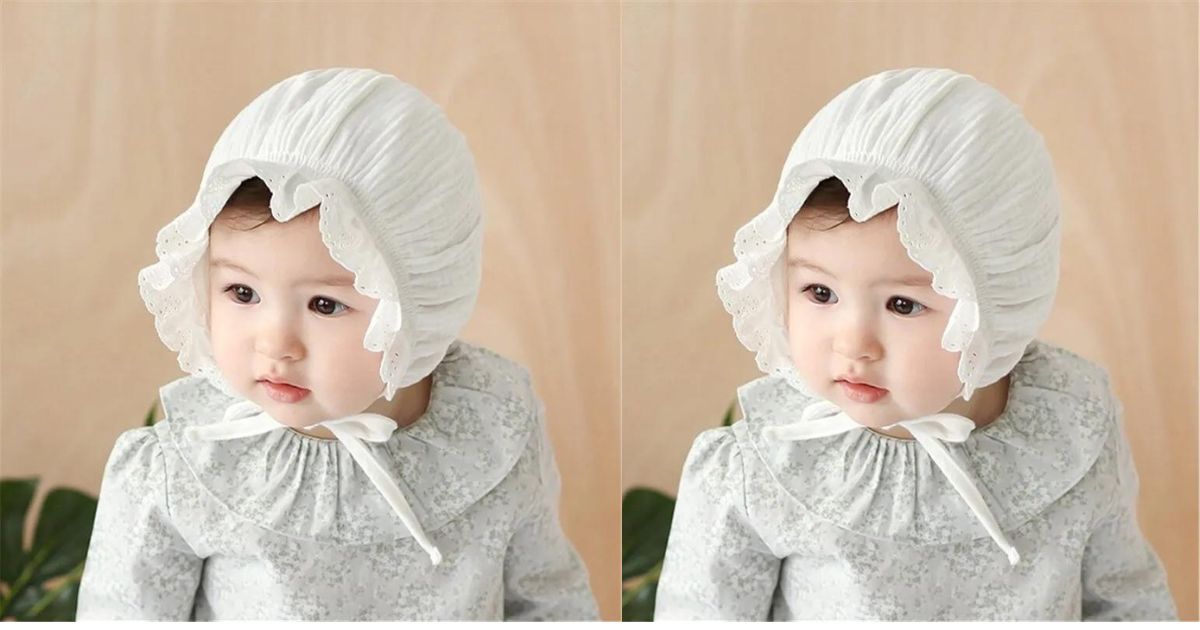The bonnet is a type of headwear that has evolved throughout history, serving both as a practical accessory and a fashion statement. Initially worn to protect the head from the sun and harsh weather, bonnets have a long-standing association with historical fashion, particularly in Western cultures. Today, the bonnet has seen a resurgence, not only as a nostalgic fashion piece but also in modern adaptations, ranging from baby bonnets to trendy hair protection bonnets for women.
A Brief History of the Bonnet
Bonnets have a rich history that dates back centuries. In the 18th and 19th centuries, bonnets were worn by women as part of their daily attire. Made from materials such as straw, silk, or cotton, they were designed to cover the head and shield the face from the sun. Bonnets were particularly popular during the Victorian era, where they became intricate and decorative pieces adorned with ribbons, lace, and flowers.
Types of Bonnets
There are various types of bonnets, each with its own purpose and style. Let’s explore the most common types:
Baby Bonnets
Baby bonnets are perhaps the most widely recognized today. These soft, protective head coverings are designed for newborns and infants to keep their delicate heads warm and shielded from the elements. Baby bonnets often come in adorable designs with ties or ribbons under the chin, ensuring a secure fit.
Sun Bonnets
Sun bonnets were traditionally worn by women, especially those living in rural areas, to protect themselves from the sun while working outdoors. These bonnets typically featured wide brims and were made from lightweight, breathable fabrics such as cotton or linen. The large brim helped shield the face, neck, and shoulders from the sun’s rays.
Sleep Bonnets
Sleep bonnets are a modern type of bonnet designed for hair protection. Often made from satin or silk, they are used by people with natural or curly hair to reduce friction while sleeping, prevent tangles, and retain moisture. These bonnets have become an essential part of nighttime hair care routines, especially for those with textured or curly hair.
Fashion Bonnets
Fashion bonnets have made a comeback in recent years, inspired by vintage and retro styles. These bonnets are worn as a statement piece, often featured in fashion shows or worn by those who love to incorporate historical elements into their modern wardrobe. They range from minimalist designs to more elaborate ones, reminiscent of the Victorian era.
Materials Used in Bonnets
The material used to make a bonnet often depends on its intended purpose. For example, baby bonnets are typically made from soft, breathable fabrics like cotton or wool to provide warmth without irritating a baby’s sensitive skin. Sun bonnets are made from light fabrics such as linen or cotton to keep the head cool. Sleep bonnets, on the other hand, are crafted from satin or silk, materials that are gentle on hair and reduce breakage.
The Bonnet in Historical Fashion
During the 18th and 19th centuries, the bonnet was more than just a practical item—it was an integral part of a woman’s fashion statement. Bonnets of the time were often decorated with lace, ribbons, flowers, and other embellishments. Women wore them not only for protection from the elements but also to complement their outfits. Bonnets came in various designs depending on the occasion, from simple everyday wear to more elaborate bonnets worn for formal events.
The Modern-Day Bonnet Revival
While bonnets were once considered old-fashioned, they’ve seen a resurgence in the modern world. Vintage fashion lovers, costume enthusiasts, and even everyday people are rediscovering the charm of the bonnet. Contemporary designers have brought new life to the bonnet, incorporating them into runway shows and fashion collections. Additionally, sleep bonnets have gained popularity as part of hair care routines, especially for those with textured hair.
Why Wear a Bonnet?
There are many reasons why people wear bonnets today, both for practical and fashionable purposes:
Hair Protection: Sleep bonnets made of satin or silk help reduce friction while sleeping, preventing breakage and frizz for curly, coily, or natural hair.
Sun Protection: Sun bonnets are still used today, particularly in rural or sunny regions, to protect the skin from harmful UV rays.
Fashion Statement: Vintage-style bonnets are worn by those who appreciate historical fashion or want to make a unique style statement.
Baby Care: Bonnets for babies help keep them warm and protect their sensitive heads from cold weather.
Caring for Your Bonnet
Proper care for a bonnet depends on its material and intended use. For baby bonnets made of cotton or wool, it’s important to wash them gently by hand or on a delicate cycle to maintain the softness of the fabric. Sleep bonnets made from satin or silk should be hand-washed in cold water and air-dried to retain their texture and sheen. Storing bonnets in a cool, dry place helps preserve their shape and quality over time.
Styling Your Bonnet
For those who enjoy integrating bonnets into their daily wardrobe, there are many ways to style them. Pairing a vintage bonnet with a flowy dress can create a romantic, retro look, while a modern sleep bonnet can be worn as part of a stylish loungewear ensemble. Baby bonnets, with their adorable designs, can be matched with cute outfits, making your little one look even more adorable.
Conclusion:
From its historical roots to its modern-day applications, the bonnet has proven to be a versatile and timeless accessory. Whether worn for protection, fashion, or comfort, bonnets continue to be a beloved part of our wardrobes. As fashion trends evolve, the bonnet remains a reminder of how a simple piece of headwear can serve both practical and aesthetic purposes.
FAQs
Are baby bonnets necessary for newborns?
Yes, baby bonnets are often used to keep newborns warm and protect their sensitive heads from cold weather.
How do sleep bonnets benefit hair?
Sleep bonnets made from satin or silk help reduce friction while sleeping, preventing breakage, frizz, and tangles, especially for textured or curly hair.
Can bonnets be worn as a fashion statement?
Absolutely! Bonnets, particularly vintage-inspired ones, are making a comeback in fashion as statement pieces.
What materials are best for sun bonnets?
Sun bonnets are best made from lightweight, breathable fabrics like cotton or linen to protect the head from the sun while keeping it cool.
How should I clean my sleep bonnet?
Sleep bonnets made of satin or silk should be hand-washed in cold water and air-dried to maintain their quality and softness.











